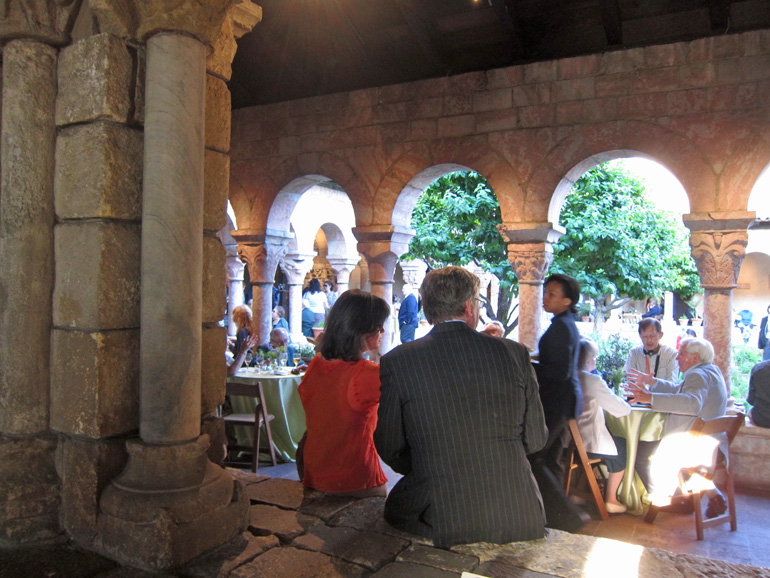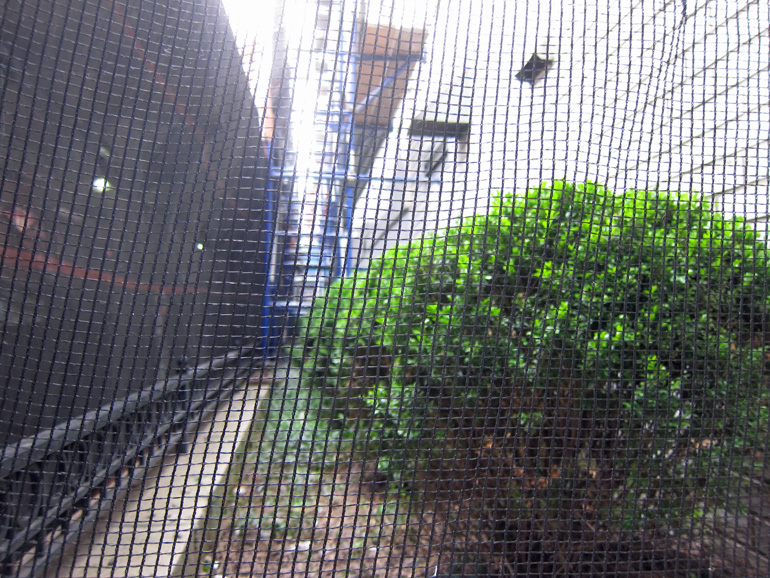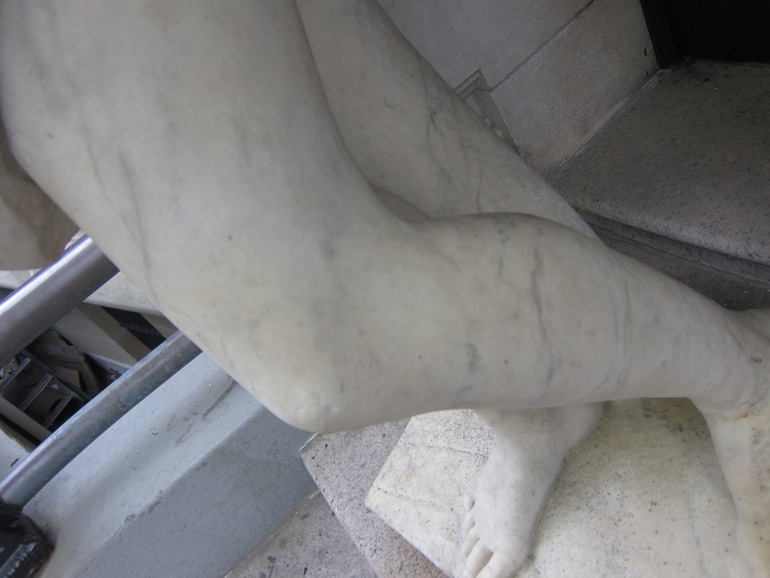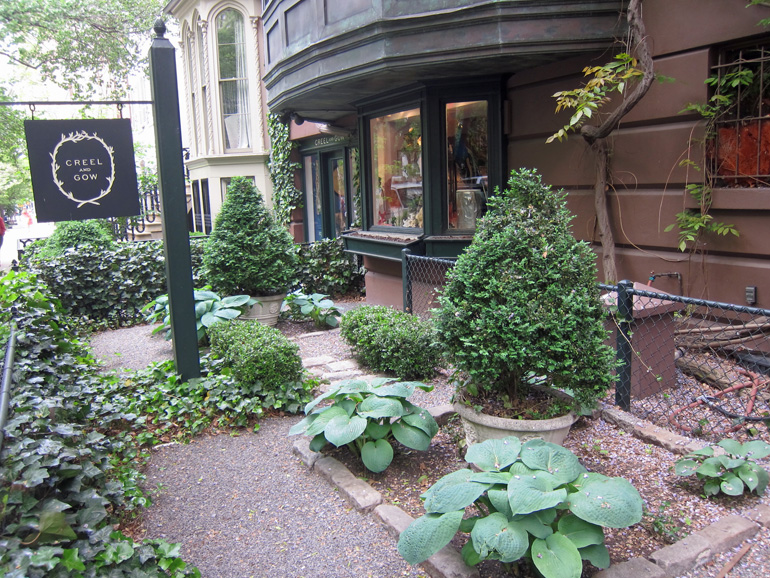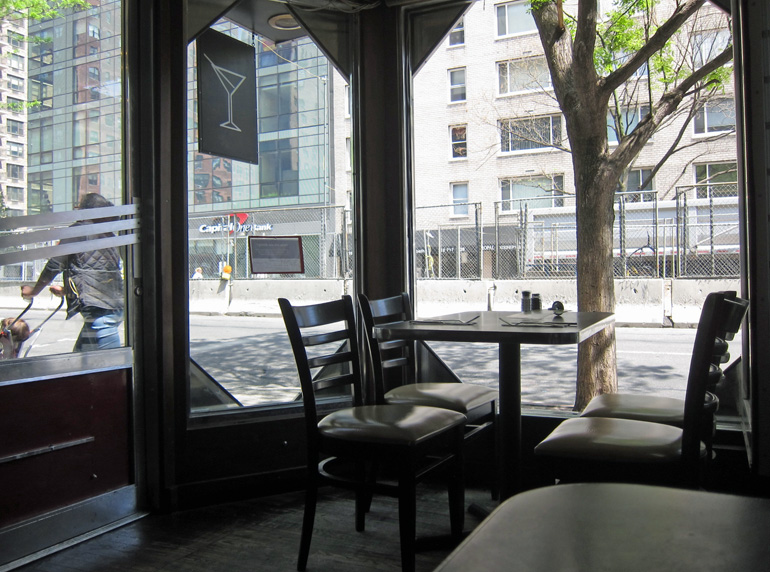Gotham Diary:
The Horror
9 June 2014
In those days, I was living a much more distracted life. I was oscillating between the apartment in Yorkville and the house on Candlewood Lake. The Internet lay a few years in the future, so I was still stuck in the cell of my own reading and writing. (And, oh dear, what I was writing!) So I spent a lot of time working on my sun-starved garden, hanging out with the Connecticut neighbors, and of course driving back and forth along Route 7, IH 684, and the Bronx River Parkway. I was in my middle forties, and I had no idea of what to do with myself.
Would it be any different today, even though I’m very clear about what I ought to be doing? I think so, but I can’t say why. I don’t run out and buy every book that gets an interesting review. (It only seems that way.) Perhaps I am barking up the wrong tree.
Maybe there was nothing exemplary about how David Nasaw’s Going Out came into my library, only to sit unread for several years. This is not the sort of thing that “happens all the time.” What happened with Nasaw’s book was that I read a terrific review during that distracted time — twenty years ago —and did not follow up with a purchase. (Among other things, there was no Amazon.) Eventually, I forgot its author’s name and its title. But I did not forget an arresting proposition that the review attributed to Nasaw. Nasaw’s book, it seemed, argued that, by excluding African Americans, and only African Americans, from most venues of public entertainment during the decades in which American “popular culture” was launched on its modern course, the men who ran show business homogenized the rest of the population. Swarthy immigrants from Southern Europe who had earlier been eyed as all but “colored” now became as white as anybody else. If America was a melting pot, blacks were the pot.
This insight, which seemed obvious the moment it was shared with me, became fundamental to my understanding of life in the United States, and I was soon embarrassed by the awkwardness of referring to an idea that was not my own but that I could not source. Beneath this lay the discomfort that always dogs me when I talk about racism. Growing up, I saw a lot of racism, but, a handful of Jewish shopkeepers aside, I never saw its objects. That’s to say that Jews (until I went to boarding school) and blacks (until I wound up in Houston) were simply not present as human beings. They were service providers who guarded their privacy with a ferocity that I did not understand until late middle age.
I’m sure it was Amazon that came to the rescue, with one of those queues of books that buyers who bought what you bought also bought. The moment Going Out showed up, several years ago, I recognized it and ordered it in a fever of relief. But when it arrived, I didn’t read it. I didn’t check to make sure that this was indeed the book from which sprang the connection of mass entertainment to mass (and unconscious) racism. My life was much less distracted now, but still distracted enough.
Last week, I pulled it down from the shelf in a fit of caprice: I had just read two thick books about the Great War, and I needed something that, above all, wasn’t lengthy.
Going Out: The Rise and Fall of Public Amusements turned out to be the book, all right. Nasaw introduces his bleak thesis on the second page, and he devotes the fifth chapter to it. I think that he might have done a little more with the role played by the rage of newly-liberated blacks, in the decades after 1945, in the demise of “public amusements,” but he by no means neglects this aspect. In every way, Going Out is a standout in the social history of a very sore point. But I learned something more terrible still. Skin color had nothing to do with it.
Or rather — since I’ve always known that skin color has little or nothing to do with racism directed at Africans and their descendants — I learned that the differences in facial features between blacks and whites were grotesquely distorted by popular entertainment to make monstrosities of African-Americans.
David Nasaw reproduces a couple of illustrations showing caricatures of “darkies” — by far the least obscene term — that ornamented sheet music and theatrical posters in the years around the turn of the Twentieth Century. They are too disgusting to describe. Unless you’ve been living under a rock, you have probably seen the like. But here, in Nasaw’s book, the context produces an unbearable calculus: even as African-Americans were being hideously misrepresented on the stage and screen (often by white impersonators), there were no African-Americans in the audience with whom a spectator might make a corrective comparison. The very natural result of systematic and prolonged segregation — its illegality throughout the northern states never enforced upon exhibitors except in the form of paltry fines — was a white population for whom the mere presence of an African-American amongst them (not just serving them) signaled something wrong, a disturbing breakdown of the accustomed order. By the same token, everybody in the audience, no matter how hairy or dark, could be assumed to be white.
Nasaw makes his case adroitly, but the most eloquent passage in Going Out is drawn from a 1906 book by HG Wells, The Future in America.
African Americans, alone among the American peoples, were considered to be not only lacking in respectability but also constitutionally incapable of acquiring it. For HG Wells, visiting the United States in 1904, this fact of American life was virtually inexplicable. Try as he might, he could not understand the attitudes of white Americans toward “colored” people, especially as many of these “colored” people were, he discovered, “quite white” and had “the same blood,” the same Anglo-Saxon blood, flowing in their veins as the oldest, finest southern planter families. Wells was particularly confused by the difference between the way southern European immigrants and African American “natives” were treated in the city’s public spaces. Though many of the blacks had patrician white ancestors, they were shunned and segregated. European “immigrants,” on the other hand, who shared no biological or cultural heritage with American whites, were afforded every social courtesy and right. Wells confronted his southern hosts with his confusion. “These people … are nearer your blood, nearer your temper, than any of those bright-eyed, ringleted immigrants on the East Side. Are you ashamed of your poor relations? Even if you don’t like the half, or the quarter or negro blood, you might deal civilly with the three-quarters white.”
North and South, Wells’s questions were met with the same sorts of answers, all testifying to the “mania” with which whites explained and defended segregation. “One man will dwell upon the uncontrollable violence of a black man’s evil passions … another will dilate upon the incredible stupidity of the full-blooded negro … a third will speak of his physical offensiveness, his peculiar smell which necessitates his social isolation.” More than once, Wells was told stories about light-skinned blacks who married “pure-minded, pure white” women who gave birth to children “black as your hat. Absolutely negroid.” Anecdotes such as these about “the lamentable results of intermarriage” were used not simply as an argument “against intermarriage, but as an argument against the extension of quite rudimentary civilities to the men of color. “If you eat with them, you’ve got to marry them,” Wells was told. There was no acceptable compromise, no halfway point between miscegenation and segregation.
What this thinking on the part of whites meant for African Americans was obvious. There was no escape from biological destiny, no way blacks could change their appearance, rid themselves of what Wells’s hosts had called their “evil passions,” or their “peculiar smell.” The “taint” of black blood was such as to render attempts at respectability foolhardy. To sacralize public amusement spaces and sanctify their audiences as decent, African Americans had to be excluded or segregated within them. No exceptions could be permitted.
My mother had a thing about “peculiar smells.”
Going Out gives much more space to the development of “automatic entertainment,” of which cinema would be the apex. At one point, his discussion of crusading attempts to exclude children — the poor children of immigrants, mostly — from “risqué” nickelodeons suggested a second segregationist front. But no: what these moralists sought was the demolition of all obstacles to the lower classes’ attainment of respectability. They couldn’t have cared less what African-Americans were exposed to.
Those books about the Great War turned out to have made for much lighter reading.
Daily Blague news update: Ownerism.


